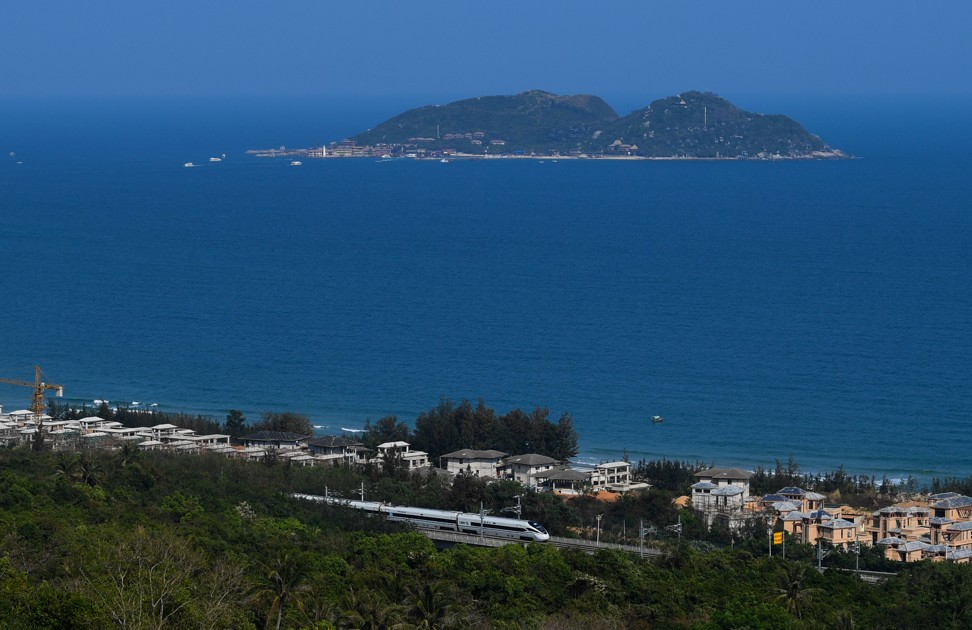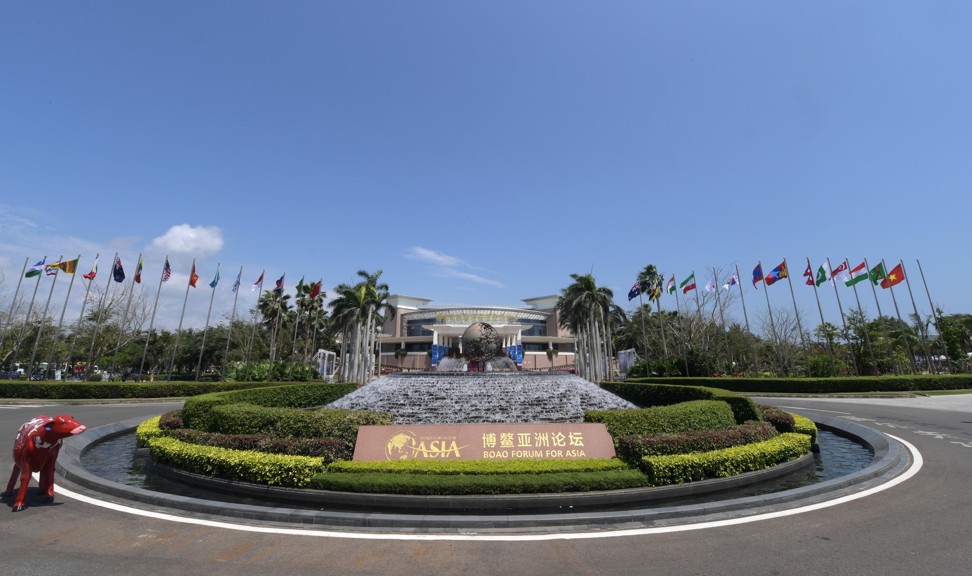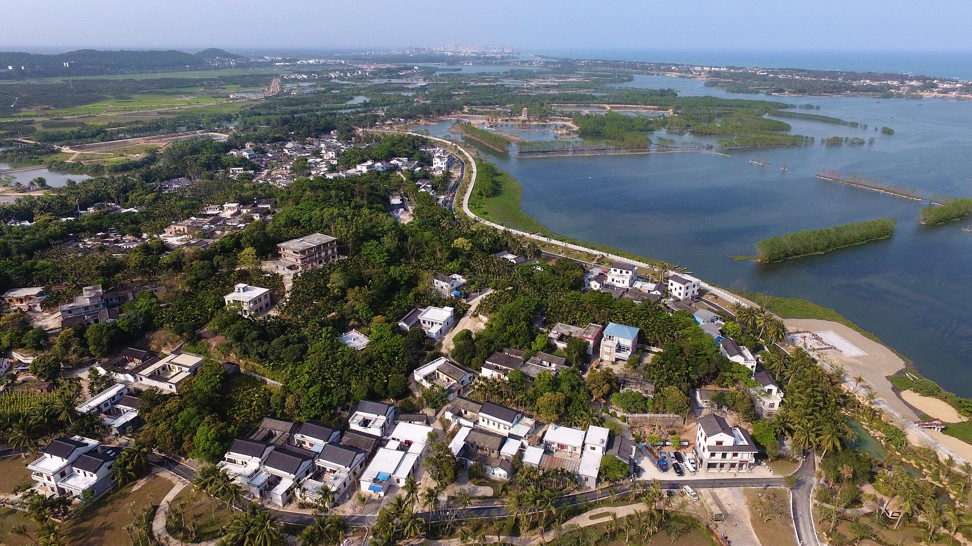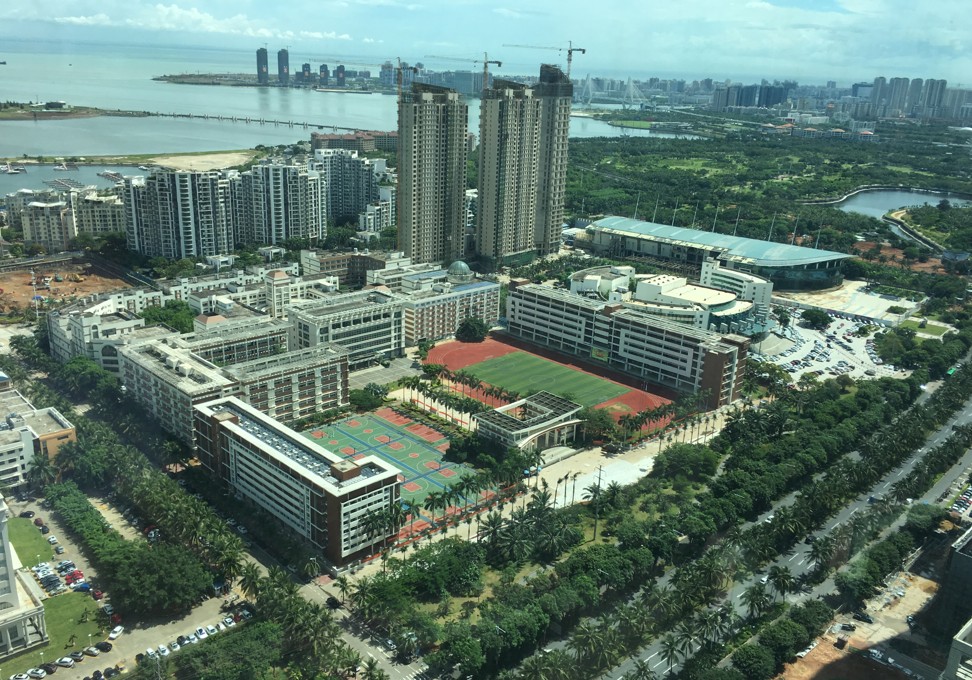
Can President Xi Jinping succeed in ‘China’s Hawaii’ where Deng Xiaoping failed?
Amid a growing trade dispute with the US, Xi will be keen to use the Boao Forum for Asia to reassure the world that China remains open for business
Hainan, a southern island known as China’s Hawaii, is about to get another chance at becoming a testing ground for the country’s economic liberalisation as Beijing tries hard to paint itself as a promoter of free trade and globalisation.
At the annual Boao Forum for Asia, which opens on Sunday at a beach and golf resort town on the island’s east coast, Chinese President Xi Jinping is likely to announce plans for new free-trade ports with greater autonomy, economic freedom and market access, and Hainan could be among the locations chosen, sources told the South China Morning Post.
“It will be Xi’s own ‘southern tour’,” a government researcher said, referring to the famous trip made by China’s former paramount leader Deng Xiaoping in 1992.
During that tour, which came as Beijing was being shunned by liberal democracies after the 1989 Tiananmen Square crackdown, Deng sent a strong message that China would continue to liberalise its markets and integrate with the global economy. It worked. After the tour, China’s economic boom, which had started in the early 1980s, was rekindled.
Xi, who is now the most powerful Chinese leader since Mao Zedong, is keen for any future expansion of the world’s second-largest economy to be high quality rather than high speed.
In January, Xi’s top economic aide, Liu He, told the World Economic Forum in Davos that China’s market liberalisation efforts this year would be “beyond the expectations” of the international community, while newly appointed central bank governor, Yi Gang, said last month that a slew of major openings would be unveiled at Boao. Yi is one of several key members of Xi’s economic team who will be at Boao.
On Sunday morning, Chi Fulin, the head of the China Institute for Reform and Development, a think tank in Hainan, said on state television that the island would be at the forefront of the opening up of China’s services market, covering everything from tourism to health care, and easier access for foreign companies.
Besides its economic agenda, the forum will serve as a venue for Beijing to project its influence in the South China Sea, despite its ongoing disputes with several other claimants to the waterway, through which a third of the world’s total trade travels. Singapore’s Prime Minister Lee Hsien Loong and Philippine President Rodrigo Duterte are among the foreign leaders expected to be there.
Because of its strategic location, Hainan – a 34,000 square kilometre (13,130 square mile) island in the northwest of the South China Sea, with Vietnam to the west and the Philippines to the east – is already home to significant Chinese military might.
In a sign of the province’s growing geographic and strategic importance, China is building its own Pearl Harbour there, turning naval bases in the popular tourist city of Sanya into a massive port capable of handling aircraft carriers. The goal is to create a facility that can support China’s efforts to counterbalance the US presence in the western Pacific.
Hainan is home to much of the People’s Liberation Army’s South Sea Fleet submarine force – both conventional attack and nuclear – a large air force, ground radar and missile positions, as well as coastguard bases and thousands of troops.
It also supports, logistically and militarily, the Chinese-controlled lands and reefs across the South China Sea, including seven artificial islands in the Spratlys more than 1,000km (620 miles) away. There is also a space port, which is the only one in the country capable of handling the military’s most powerful rockets.
In 1988, Hainan was made independent from Guangdong as a province and became China’s biggest special economic zone. Talent and money poured into the island. However, instead of becoming a new focal point for the country’s prosperity, the gold rush quickly descended into scandal and a massive property bubble as housing prices in Haikou, the capital city, tripled in 1992. Beijing intervened the following year, stopping all bank loans for Hainan property and busting the first known housing bubble in history of China.
During the next quarter of a century, Hainan’s significance in China’s economy greatly diminished. In the five years through 2017, it attracted less than US$10 billion in foreign investment – only 1.5 per cent of China’s total – and has struggled to find its place in the nation’s economic landscape.
“With favourable policies and a great number of investments, Hainan has messed up multiple times,” said Liu Yong, a regional development economist at Development Research Centre for the State Council. “They never opened enough. There were good ideas, but each time when there were setbacks they pulled back.”
The island’s attempts to become a regional tourism destination have also faltered.
In 2009, a new strategic plan was established for Hainan to become an “international tourist island”, injecting huge investments into its economy. The property market began to grow again and infrastructure – including motorways, high-speed rail and new airports – were added.
In 2017, 67 million people visited the island, double the number from 2012, and spent 81 billion yuan (US$12.8 billion). But of the total visitors, just 1 million were from abroad, making the current market far from “international”. (In comparison, Bali in Indonesia, which is only a sixth of the size of Hainan, received 5 million international tourists in 2016.)
Liu said Hainan’s tourist attractions and facilities could not yet compete with other Southeast Asian destinations, such as Bali or Thailand, because of high prices, low-quality services and insufficient infrastructure.
Proposals including duty-free and visa-free visits, and even legalising gambling, were raised in the plan for the international tourist island. But when the plan was finalised in 2010, the concepts were downsized: a couple of duty-free shops for domestic tourists were built, and gambling was limited to sport lotteries.
“They are outdated ideas,” said Zhao Xijun, an economist from Beijing’s Renmin University.
Hainan could not compete with regional shopping cities like Hong Kong or Tokyo, and given domestic consumers’ demand for cheap foreign goods, e-commerce was more convenient, he said.
It was against that backdrop that the idea emerged to turn Hainan into a free-trade port, like Hong Kong. Since 2013, China has established 11 free-trade zones across the country.
Sources have suggested the new ports will enjoy much greater freedom in terms of policymaking than existing free-trade zones, and be more open in terms of market access. They would apply international standards to ensure the free flow of goods, human resources, capital and investment, and be supported by new rules and regulations, a source said.
The Boao Forum for Asia, often seen as Asia’s answer to the World Economic Forum in Davos, Switzerland, is a good venue for Xi to unveil new initiatives.
It will not be the first time Xi has spoken at the gathering of Chinese and regional government officials, business executives and opinion leaders. He made the keynote speech three years ago, in which he promoted his idea of the “shared destiny of mankind” and the “Belt and Road Initiative”.
It is no longer viewed as an awkward event for China, as it was in the early days, but one of China’s four major diplomatic events. At the conference in 2002, then premier Zhu Rongji was forced to apologise to foreign guests after poor logistics and arrangements raised questions about China’s ability to organise even larger international events such as the 2008 Summer Olympics.
Beijing is trying to give the forum, which began 17 years ago, a bigger role in influencing views and building up rapport with neighbouring countries. Wang Yi, China’s foreign minister, said at a briefing that the forum was “an important bridge between China and the world” as well as “an international dialogue platform with Asian characteristics and global influence”.
Deng, who initiated China’s era of economic reform, decided to create Hainan as a province three decades ago with certain economic privileges, hoping to demonstrate the Communist Party’s ability to foster growth on the island.
Hainan’s per capita GDP, however, remains low – it was below the national average in 2017 – and it ranked 22nd of 31 provinces for its growth rate.
For the next several days, the island will play host to government officials, business executives and economic experts looking to find clues about Beijing’s economic plans.
“It would be great if we could develop Hainan well,” Deng said 31 years ago.
Now it is Xi’s turn to see if he can bring success where Deng failed.






